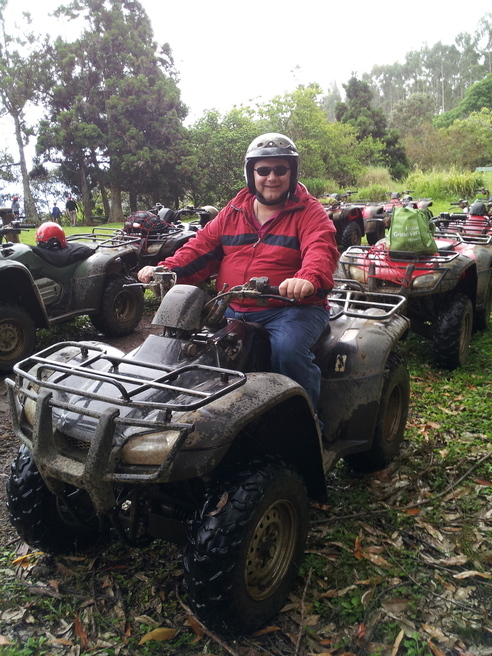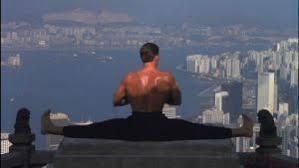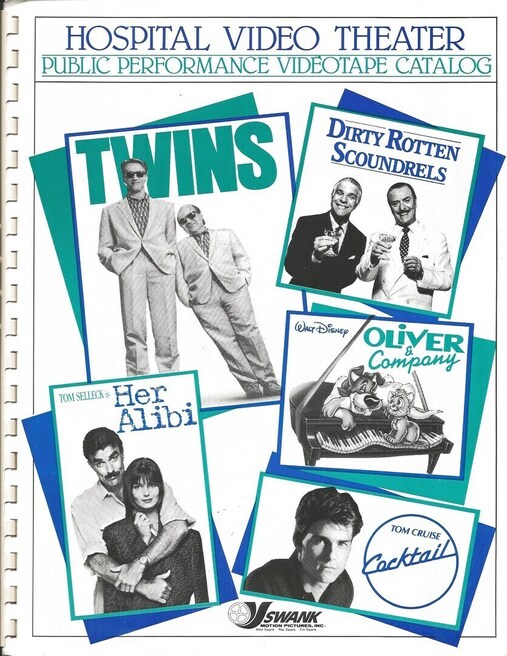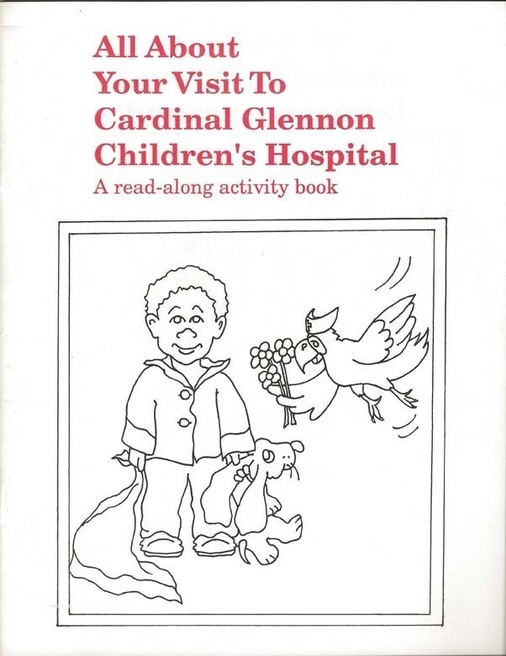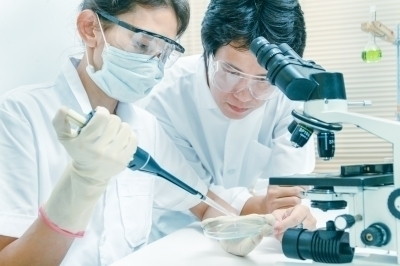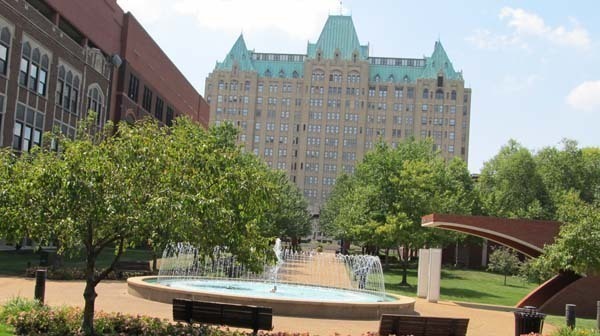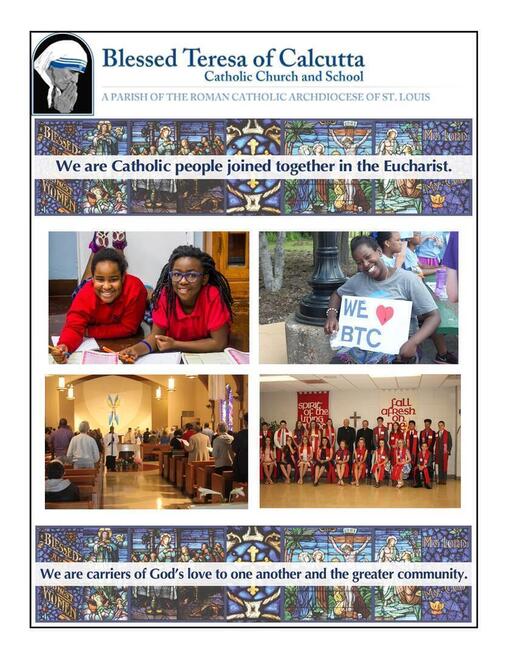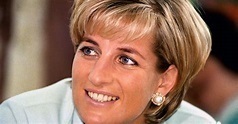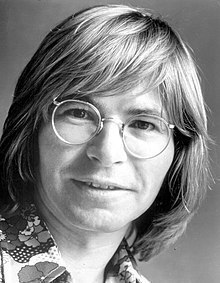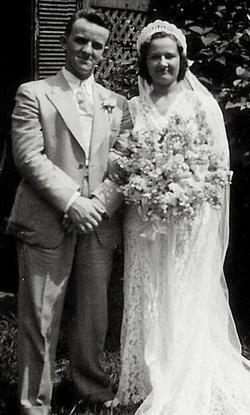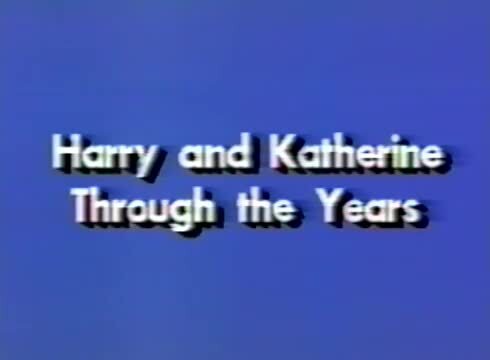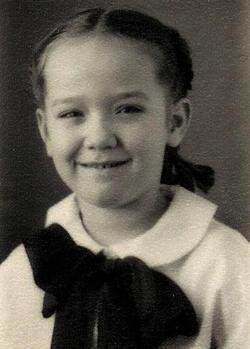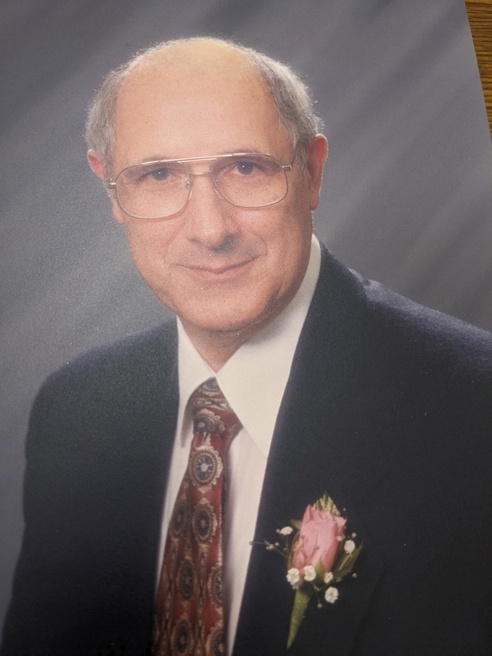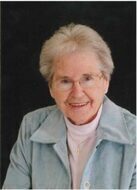Biography of My Life
June 27, 2021
I was born Michael Gerard Luczak on August 31, 1965, and lived a very blessed life. I grew up with my mother, father, and a younger brother named Steve in an apartment in the city on Klocke street, only a short walk away from Ted Drewes on Grand Avenue. My mom was 24 and my dad was 26 when they had me. My middle name of Gerard was due to the fact that my parents prayed to St. Gerard during the pregnancy, as my mother had had several miscarriages before I was born. My brother's middle name is also Gerard.
We were a very close family, who lived in a shot-gun four-family flat apartment. My dad had told the movers that he would see them back shortly after he moved to Klocke, but he was never able to save up enough cash to purchase a home initially. He was an electrical engineer by trade but went to Ranken Technical Institute instead of to a four-year college due to the fact of my grandfather being hospitalized while he was attending Ranken. Unfortunately, as a result of my grandfather's illness due to severe depression, he became the primary breadwinner of the family. My dad had one sister, Agnes, and my mom had a brother, Harry, and a sister, Kathy.
We were a very close family, who lived in a shot-gun four-family flat apartment. My dad had told the movers that he would see them back shortly after he moved to Klocke, but he was never able to save up enough cash to purchase a home initially. He was an electrical engineer by trade but went to Ranken Technical Institute instead of to a four-year college due to the fact of my grandfather being hospitalized while he was attending Ranken. Unfortunately, as a result of my grandfather's illness due to severe depression, he became the primary breadwinner of the family. My dad had one sister, Agnes, and my mom had a brother, Harry, and a sister, Kathy.
I went to Saint Anthony's grade school and Saint Mary's high school on Grand Ave. in South St. Louis. I was a straight-A student, who went to straight-A St. Louis Cardinal baseball games. It was in second grade that I began writing poems and short stories. Luckily, my teachers encouraged me to write as much as possible. My nickname in grade school was "Baby Lou."
In high school, I played on the C-Team Basketball team, and B-Team Baseball team, and was a member of the National Honor Society. I received English honors from Saint Mary's high school upon graduation and was known as an avid writer. In fact, students were allowed to read my works during study halls in the library. I wrote short stories, poems, and novels.
In high school, I played on the C-Team Basketball team, and B-Team Baseball team, and was a member of the National Honor Society. I received English honors from Saint Mary's high school upon graduation and was known as an avid writer. In fact, students were allowed to read my works during study halls in the library. I wrote short stories, poems, and novels.
Although I was in the National Honor Society, for two semesters I decided to challenge myself in an Algebra-Trigonometry class taught by Brother "Jumping Joe" O'Mera. I was horrible at math throughout my academic career but was bored as a Junior so I took the class. I would receive two "Fs" the first two semesters, but then on the final, as I finally caught up in understanding what was being taught I received a "B" on the final. It was one of the proudest accomplishments of my academic career. My parents, especially my father were unhappy with my choosing the class. All my mother knew was that I had essentially ruined my grade point average, and she attributed it to my failure to study enough. My dad, however, knew better than that and respected me for my efforts.
In high school and college, I worked at Busch stadium as an usher. My main job was guarding Whitey Herzog as he stood in the dugout. It was my job to sit by the dugout and make sure he was not disturbed by fans seeking autographs, or wanting to take pictures of him. He always stood at the very far left of the dugout so he was susceptible to fan interaction without our help. I also worked Busch's box, which was located on the first base field box section, and for the most part, my job was making sure that NO ONE other than the Busch family and their friends sat in the box seats. My brother worked as an usher at the ballpark as well in the box seats area. The Cardinals drew well in those days, as the teams were popular.
MORE ON WHITEY HERZOG (AFFECTIONATELY CALLED "THE WHITE RAT")
According to Wikipedia, Dorrel Norman Elvert "Whitey" Herzog (/ˈhɜːrzɒɡ/; born November 9, 1931) is an American former professional baseball outfielder and manager, most notable for his Major League Baseball (MLB) managerial career.Born in New Athens, Illinois, Herzog made his MLB debut as a player in 1956 with the Washington Senators. After his playing career ended in 1963, Herzog went on to perform a variety of roles in Major League Baseball, including scout, manager, coach, general manager, and farm system director. As a big-league manager, he led the Kansas City Royals to three consecutive playoff appearances from 1976 to 1978. Hired by Gussie Busch in 1980 to helm the St. Louis Cardinals, the Cardinals won the 1982 World Series over the Milwaukee Brewers and made two other World Series appearances, in 1985 and 1987 under Herzog's direction. He was inducted into the Baseball Hall of Fame on July 25, 2010, and was inducted into the St. Louis Cardinals Hall of Fame Museum on August 16, 2014.
HERZOG'S MANAGERIAL SUCCESS
Herzog continued building his managerial credentials with the California Angels (1974 on an interim basis; as a coach, he filled in between the firing of Bobby Winkles and the hiring of Dick Williams, Kansas City Royals (1975–79) and St. Louis Cardinals (1980–90). He succeeded Jack McKeon as Royals manager on July 24, 1975. At the time, the Royals were in second place in the American League West but trailed the defending and eventual division champion Oakland Athletics by 11 games. He had his greatest success in Kansas City, where he won three straight American League Western Division titles from 1976 to 1978, and in St. Louis, where he won the 1982 World Series and the National League Pennant in 1985 and 1987. In total, he led six division winners, three pennant winners, and one World Series winner in compiling a 1,281–1,125 (.532) career record.
With his extensive background in player development, Herzog also was a general manager with both the Cardinals (1980–82) and the California Angels. He succeeded interim skipper Jack Krol as manager of the Redbirds on June 9, 1980, managed for 73 games, then moved into the club's front office as GM on August 26, turning the team over to Red Schoendienst. During the offseason, Herzog reclaimed the manager job, then held both the GM and field manager posts with St. Louis for almost two full seasons, during which he acquired or promoted many players who would star on the Cardinals' three World Series teams of the 1980s. In a 1983 poll of MLB players by The New York Times, Herzog was voted best manager in baseball.
A less noticed (at the time) aspect of Herzog's offensive philosophy was his preference for patient hitters with high on-base percentages: such players included Royals Brett, Hal McRae, and Amos Otis, and Cardinals Clark, Keith Hernandez, José Oquendo, and Ozzie Smith, as well as Darrell Porter, who played for Herzog in both Kansas City and St. Louis. However, in St. Louis Herzog also employed free-swinging hitters who were less patient but fast runners, such as Vince Coleman and Willie McGee.
MY COLLEGE YEARS
Herzog continued building his managerial credentials with the California Angels (1974 on an interim basis; as a coach, he filled in between the firing of Bobby Winkles and the hiring of Dick Williams, Kansas City Royals (1975–79) and St. Louis Cardinals (1980–90). He succeeded Jack McKeon as Royals manager on July 24, 1975. At the time, the Royals were in second place in the American League West but trailed the defending and eventual division champion Oakland Athletics by 11 games. He had his greatest success in Kansas City, where he won three straight American League Western Division titles from 1976 to 1978, and in St. Louis, where he won the 1982 World Series and the National League Pennant in 1985 and 1987. In total, he led six division winners, three pennant winners, and one World Series winner in compiling a 1,281–1,125 (.532) career record.
With his extensive background in player development, Herzog also was a general manager with both the Cardinals (1980–82) and the California Angels. He succeeded interim skipper Jack Krol as manager of the Redbirds on June 9, 1980, managed for 73 games, then moved into the club's front office as GM on August 26, turning the team over to Red Schoendienst. During the offseason, Herzog reclaimed the manager job, then held both the GM and field manager posts with St. Louis for almost two full seasons, during which he acquired or promoted many players who would star on the Cardinals' three World Series teams of the 1980s. In a 1983 poll of MLB players by The New York Times, Herzog was voted best manager in baseball.
Whiteyball
Main article: Whiteyball
Herzog's style of play, based on the strategy of attrition, was nicknamed "Whiteyball" and concentrated on pitching, speed, and defense to win games rather than on home runs. Herzog's lineups generally consisted of one or more base-stealing threats at the top of the lineup, with a power threat such as George Brett or Jack Clark hitting third or fourth, protected by one or two hitters with lesser power, followed by more base stealers. This tactic kept payrolls low, while allowing Herzog to win consistently in stadiums with deep fences and artificial turf, both of which were characteristics of Royals Stadium (now Kauffman Stadium) and Busch Memorial Stadium during his managerial career.A less noticed (at the time) aspect of Herzog's offensive philosophy was his preference for patient hitters with high on-base percentages: such players included Royals Brett, Hal McRae, and Amos Otis, and Cardinals Clark, Keith Hernandez, José Oquendo, and Ozzie Smith, as well as Darrell Porter, who played for Herzog in both Kansas City and St. Louis. However, in St. Louis Herzog also employed free-swinging hitters who were less patient but fast runners, such as Vince Coleman and Willie McGee.
MY COLLEGE YEARS
I received a Bachelor of Arts in English with a Certificate in Writing and Speech Communication minor from the University of Missouri-St. Louis. In addition to attending full-time classes, I managed the daily business operations of The Current, the campus student newspaper, with an operating budget of over $60,000, and authored a weekly human-interest column titled “A Touch of Class."
My accomplishments, while working at The Current included:
* As Features Arts Editor, I attended publicity junkets for "Gung Ho", "That Was Then, This is Now" and "Pretty in Pink." At the major press conferences, I had a chance to interview such stars as Molly Ringwald, Jon Cryer, Andrew McCarthy, Michael Keaton, James Spader , Annie Potts, and such movie directors as John Hughes, Ron Howard, and actor and director Emilio Estevez.
* As Features Arts Editor, I attended publicity junkets for "Gung Ho", "That Was Then, This is Now" and "Pretty in Pink." At the major press conferences, I had a chance to interview such stars as Molly Ringwald, Jon Cryer, Andrew McCarthy, Michael Keaton, James Spader , Annie Potts, and such movie directors as John Hughes, Ron Howard, and actor and director Emilio Estevez.
(I actually attended the Hollywood Premiere of "Pretty in Pink" at the Chinese Mann Theater in Los Angeles, California, which included a red carpet and bright searchlights to promote the event. MTV covered the event and afterward, with a bunch of college reporters, I attended a "Pretty and Pink" party, and stood only a few feet away from actors Michael J. Fox, Judd Nelson, Molly Ringwald, Andrew McCarthy, Robert Downey, Jr., Ally Sheedy, Anthony Michael Hall, and Demi Moore, many of whom were dubbed the "brat pack. I also sat behind my idol Terri Garr as luck would have at for the movie premiere.)" During my time working at the newspaper I had the following accomplishments:
* I enhanced the newspaper's operations by acquiring portable computers for reporters, and a computer and related software for the business department. The acquisition doubled overall productivity.
* I assisted in writing and implementing a policy and procedure manual that improved overall operations.
* I developed a proposal leading to the purchase of a $7,000 Graphic Arts Camera, which reduced darkroom costs by 20%.
* I recruited, supervised, scheduled, and trained 16 writers, production assistants, and sales personnel.
In my lifetime, I've loved to be in the moment, laugh, be funny, thrift shop, and of course write, as this memorial site would suggest. In high school, I wrote a lot of short stories, poems, and novels. My favorite all-time novels are "Catcher in the Rye" by J.D. Salinger and "The Pigman" and "Pardon Me, You're Stepping on My Eyeball" by Paul Zindel. In high school, I wrote a novel called "Making Out In Quicksand." It was a romance novel about teens who found themselves rallying around saving a local park called Quicksand Park.
* I enhanced the newspaper's operations by acquiring portable computers for reporters, and a computer and related software for the business department. The acquisition doubled overall productivity.
* I assisted in writing and implementing a policy and procedure manual that improved overall operations.
* I developed a proposal leading to the purchase of a $7,000 Graphic Arts Camera, which reduced darkroom costs by 20%.
* I recruited, supervised, scheduled, and trained 16 writers, production assistants, and sales personnel.
In my lifetime, I've loved to be in the moment, laugh, be funny, thrift shop, and of course write, as this memorial site would suggest. In high school, I wrote a lot of short stories, poems, and novels. My favorite all-time novels are "Catcher in the Rye" by J.D. Salinger and "The Pigman" and "Pardon Me, You're Stepping on My Eyeball" by Paul Zindel. In high school, I wrote a novel called "Making Out In Quicksand." It was a romance novel about teens who found themselves rallying around saving a local park called Quicksand Park.
I absolutely love stand-up comedy. My favorite stand-up comedian is Jim Gaffigan, but I was also a fan of Jerry Seinfeld, Billy Crystal, Adam Sandler, Will Ferrell, Ellen Degeneres, and Jimmy Fallon. I loved making people laugh and have a very unique and creative sense of humor. I even have my very own on-liner t-shirt and hoodie business called "Train of Thoughtz" which had some of my original one-liners found at https://trainofthoughtz.com.
As a kid, I was influenced by The Little Rascals, which I watched before going to school each morning. I thrived to be a lot like Spanky in my everyday life. I feel was a lot like Spanky in that I was always very practical and saw myself as a leader who was forward-thinking, and who could relate to anyone at any time and at any place.
Although I was not in a leadership role at the end of my career, I was in very important and stressful positions as Director of Grants and Contracts for the SLU Health Sciences Center (for a year and a half) and was a Contract Administrator whereby I single-handedly oversaw the multi-million-dollar contract operations at Saint Louis University Hospital (for a total of nine years).
As a kid, I was influenced by The Little Rascals, which I watched before going to school each morning. I thrived to be a lot like Spanky in my everyday life. I feel was a lot like Spanky in that I was always very practical and saw myself as a leader who was forward-thinking, and who could relate to anyone at any time and at any place.
Although I was not in a leadership role at the end of my career, I was in very important and stressful positions as Director of Grants and Contracts for the SLU Health Sciences Center (for a year and a half) and was a Contract Administrator whereby I single-handedly oversaw the multi-million-dollar contract operations at Saint Louis University Hospital (for a total of nine years).
I began my career at the city's No. 2 local advertising agency and developed marketing and promotion strategies for clients like Paramount Pictures, Tri-Star Pictures, Walt Disney Pictures, and Twentieth Century Fox.
I really enjoyed my time in advertising and promotions, as my job mainly was responsible for getting the word out about new films opening in the St. Louis area and developing high-end promotions with radio stations. For the movie, "For Keeps" with Mollie Ringwald, for instance, I was able to get a local retailer to provide a gold watch and raffle it off on the air during a radio promotion for someone to keep "for keeps." For the movie "Couch Trip" I was able to get Calico to donate fifteen "Couch Potatoes" to be given out during a promotion with a radio station.
Below are some promotions I did for "Tucker - The Man and His Dream." According to Wikipedia, Preston Thomas Tucker (September 21, 1903 - December 26, 1956) is most remembered for his 1948 Tucker Sedan (known as the "Tucker '48" and initially nicknamed the "Tucker Torpedo"), an automobile that introduced many features that have since become widely used in modern cars. Production of the Tucker '48 was shut down amidst scandal and controversial accusations of stock fraud on March 3, 1949. The 1988 movie Tucker: The Man and His Dream is based on Tucker's spirit and the saga surrounding the car's production. These are the promotions I did for this Tucker: The Man and His Dream:
Cadillac LaSalle Club Tie-In At Annual Car Show
The St. Louis region of the Cadillac LaSalle Club held its annual car show from 10 a.m. to 4 p.m. on August 7 in Tower Grove Park and ran a "Tucker" register-to-win screening pass contest. The club also gave away a limited amount of "Tucker" one-sheets. An estimated 300 people attended the event.
The St. Louis region of the Cadillac LaSalle Club held its annual car show from 10 a.m. to 4 p.m. on August 7 in Tower Grove Park and ran a "Tucker" register-to-win screening pass contest. The club also gave away a limited amount of "Tucker" one-sheets. An estimated 300 people attended the event.
The Horseless Carriage Club of Missouri's Classic Car Display at Kenrick Cine
'The "Tucker" radio promotional screening, which took place on Tuesday, August 9th at the Kenrick 8 Cine' had an added attraction. The Horseless Carriage Club of Missouri displayed 10 classic cars in front of the cinema. The cars were roped off, and the display caught the attention of all 500 movie fans attending the screening of "Tucker," as well as those people attending other movies.Strassenfest Riverfront Times 5K Run Tie-In
The annual Strassenfest Riverfront Times 5K run took place on Saturday, July 30 with over 700 people participating for trophies and prizes, which included "Tucker" screening passes for the Tuesday, August 9th screening that was held at Kenrick Theatre. The first 20 people to finish the 5K run, in fact, received the "Tucker" screening passes.
Fire Engine Rally Tie-In
The History Museum's 5th Fire Engine Annual Rally, sponsored by the St. Louis Post-Dispatch took place on July 31 and began with a parade of fire trucks that circled the park and surrounded the Jefferson Memorial Building in Forest Park at 9 a.m. Fire departments and engine owners displayed some of the oldest fire engines of the area until 9 p.m. "Tucker" one-sheets were posted at the tent, which was set up for the event, and the History Museum also held a register-to-win screening pass contest. Over 750 people attended.
Here Is My Story on Jean-Claude Van Damme
At Kerlick, Switzer, and Johnson, Inc., I even directed the St. Louis publicity tour for Jean-Claude Van Damme promoting the movie "Bloodsport." Jean-Claude and I actually got into quite a tiff, as he demanded the limo when I dropped him off at a hotel located on the landing during the middle of the week. Unfortunately, there was not much going on as far as nightlife when Jean-Claude came in, BUT I WAS TOLD THAT IN NO WAY WAS I TO GIVE HIM THE LIMO SINCE HIS COMPANY, CANON FILMS WOUlD NOT PAY MY ADVERTISING AGENCY FOR IT.
'The "Tucker" radio promotional screening, which took place on Tuesday, August 9th at the Kenrick 8 Cine' had an added attraction. The Horseless Carriage Club of Missouri displayed 10 classic cars in front of the cinema. The cars were roped off, and the display caught the attention of all 500 movie fans attending the screening of "Tucker," as well as those people attending other movies.Strassenfest Riverfront Times 5K Run Tie-In
The annual Strassenfest Riverfront Times 5K run took place on Saturday, July 30 with over 700 people participating for trophies and prizes, which included "Tucker" screening passes for the Tuesday, August 9th screening that was held at Kenrick Theatre. The first 20 people to finish the 5K run, in fact, received the "Tucker" screening passes.
Fire Engine Rally Tie-In
The History Museum's 5th Fire Engine Annual Rally, sponsored by the St. Louis Post-Dispatch took place on July 31 and began with a parade of fire trucks that circled the park and surrounded the Jefferson Memorial Building in Forest Park at 9 a.m. Fire departments and engine owners displayed some of the oldest fire engines of the area until 9 p.m. "Tucker" one-sheets were posted at the tent, which was set up for the event, and the History Museum also held a register-to-win screening pass contest. Over 750 people attended.
Here Is My Story on Jean-Claude Van Damme
At Kerlick, Switzer, and Johnson, Inc., I even directed the St. Louis publicity tour for Jean-Claude Van Damme promoting the movie "Bloodsport." Jean-Claude and I actually got into quite a tiff, as he demanded the limo when I dropped him off at a hotel located on the landing during the middle of the week. Unfortunately, there was not much going on as far as nightlife when Jean-Claude came in, BUT I WAS TOLD THAT IN NO WAY WAS I TO GIVE HIM THE LIMO SINCE HIS COMPANY, CANON FILMS WOUlD NOT PAY MY ADVERTISING AGENCY FOR IT.
Jean-Claude made a scene at the front of the hotel, where some people actually recognized him and said that he was taking the limo, and the limo driver agreed with him that he should have his services for the night. I told Jean-Claude there was no way I was going to give him the limo because it would mean losing my job and at the age of twenty-one, and only recently married, I couldn't afford to lose my job. I gave Jean-Claude my number, however, in case he went out on his own and rented the limo for himself. Jean-Claude later called me at 3:00 a.m. in the morning and invited me to breakfast with him, even though I had not scheduled it, and I agreed to meet him for breakfast at the hotel. He talked about his career goals, which were to become a serious actor.
JEAN-CLAUDE LATER APOLOGIZED TO ME, SAYING THAT OUT OF THE 23 CITIES HE HAD VISITED, I WAS THE ONLY ONE THAT HAD STOPPED HIM FROM TAKING THE LIMO. Before he left, Jean-Claude inquired if I would be interested in being his publicist, but I told him that the L.A. scene was not for me and that I was better suited to the Midwest, and I wished him luck as he got on a red-eye plane to his next city. He gave me a signed photograph and called my boss at 1:00 a.m. at night to tell her what a great job I had done in planning and executing the St. Louis publicity tour, which my boss did not appreciate very much. He caught her when she was fully asleep apparently. (THE MOVIE BLOODSPORT WOULD PERFORM WELL IN THE ST. LOUIS AREA AND I WOULD LIKE TO THNK IT WAS BECAUSE OF THE TOUR).
Working at Kerlick, Switzer & Johnson, Inc. was a 60-hour a week job with very little pay, but it did have its perks. The creative department had its own band that played during the weeknights and weekends throughout the Summer months and there was always a great party to go to after work. In fact, the agency owned two 19th-century replica steamboats, the Tom Sawyer and the Becky Thatcher, for cruising the Mississippi River, and the boats were often rented out for lavished parties. A variety of cruises were offered during that time: sightseeing cruises, entertainment cruises, Sunday Brunch Cruises, and cruises that featured dinner and entertainment, and more.
Working at Kerlick, Switzer & Johnson, Inc. was a 60-hour a week job with very little pay, but it did have its perks. The creative department had its own band that played during the weeknights and weekends throughout the Summer months and there was always a great party to go to after work. In fact, the agency owned two 19th-century replica steamboats, the Tom Sawyer and the Becky Thatcher, for cruising the Mississippi River, and the boats were often rented out for lavished parties. A variety of cruises were offered during that time: sightseeing cruises, entertainment cruises, Sunday Brunch Cruises, and cruises that featured dinner and entertainment, and more.
__________
Dan Kerlick was the majority owner of the Kerlick, Switzer & Johnson, Inc. team, and a very creative individual, and an advertising genius. Dan was the chairman of the board of Kerlick, Switzer & Johnson Advertising Company, the second-largest advertising company in St. Louis. Mike Switzer & Bob Johnson were the other two owners of the original company. The company was to later merge with TBWA of New York to form the twenty-first largest advertising agency in the United States. Although Dan was known for having a temper, it was because he demanded the best from his workers.
Dan Kerlick was the majority owner of the Kerlick, Switzer & Johnson, Inc. team, and a very creative individual, and an advertising genius. Dan was the chairman of the board of Kerlick, Switzer & Johnson Advertising Company, the second-largest advertising company in St. Louis. Mike Switzer & Bob Johnson were the other two owners of the original company. The company was to later merge with TBWA of New York to form the twenty-first largest advertising agency in the United States. Although Dan was known for having a temper, it was because he demanded the best from his workers.
According to the Find a Grave Website, Dan Kerlick was born on November 9, 1953, and died suddenly on July 14, 1989, at the young age of 35. He was survived by his wife at the time of his death by M. Kathleen; a son, Alexander; and a daughter, Bridget; his parents, Chris and Jeannine Kerlick; a brother, Kevin (former scholar); and three sisters, Mary Vatterott, Patrice Regan, and Amy Kerlick
Dan graduated from MU in 1976 with a degree in Journalism, with honors in advertising. In his senior year, he was President of both local and National Evans Scholars committees. He was elected to Omicron Delta Kappa, a national leadership fraternity, and Pi Omicron Kappa, a Greek leadership honorary fraternity. He served on the University Student Faculty committee and was an MSA Senator and IFC Representative. He played all four years as a defensive end on the Chapter's football team. In August 1975, Dan was selected by the Trustees of the Evans Scholars Foundation as the Outstanding Leader of the Evans Scholarship Program. Dan received his Master's degree in communication from St. Louis University in 1981.
This information came from the Evans Scholars website at the University of Missouri, Columbia.
_______________
It was my dream out of college to be a successful account executive at a local advertising agency, but after a year or so of working in this position I ended up never receiving a raise and decided to go to work for Kelly Services, as I realized that the temporaries I was supervising were making more money than me.
I would eventually go to work as a Senior Secretary for Thomas Tracy, Jr., M.D. at Saint Louis University Health Sciences Center and eventually became Director of Grants and Contracts at the Health Sciences Center later on. It was a good move, as it allowed me to accumulate money in a 401K, which is something the advertising agency didn't offer.
Early Years of Marriage
We lived in a two-bedroom apartment near Kingshighway to begin my marriage, but then after a short time eventually bought a home on Oleatha in the city, not too far away from Uncle Bill's Pancake house. We would live there for a few years until my youngest daughter Erica was about two. The home provided a write-off, but nothing more, as we actually lost money selling the home. We would then move in with my father on Woodbury Drive, up the street from my grandparents, which was after my mom passed away from ovarian cancer. We would stay with him for about six months until we found a house not far away from dad located at Peace Haven Drive.
Although we had a real estate agent helping us, we actually found the place, as a result of Kristina and I riding our bikes, and seeing the sign that the house was for sale. It turned out, we had never received a notice about the house from the real estate agent because it was listed above what we had said we were willing to pay.
We would stay at Peace Haven until Kristina was ready to enter high school. The move was especially difficult for Kristina, and both she and Erica had to deal with the fact that they would no longer be close to their life-long friends Rachel and Sarah McKelvey. We would actually sell the home and build a five-bedroom, three and one half bathroom house built in Imperial, MO at Paradise Landing. In addition to our family, we also made accommodations for downstairs quarters to be built for Mrs. Alt, Rose's mom, and the kids' grandmother. The arrangements worked out well, as we all got along, and mom was able to keep her privacy just like she wanted it.
Mom would do the cooking and laundry for us, and take care of the children while Rose and I worked. Rose worked as a patient coordinator for Western Anesthesia. As stated previously, I began my job as an Account Coordinator at Kerlick, Switzer & Johnson. For more information about my career, see my post regarding my career accomplishments listed in below.
Kristina is Born and Rolls To Her Side Giving Us a Scare
Although there wasn't anything very eventful surrounding the birth of Kristina, my first child, she did nonetheless, give us a scare when she rolled over on her side as the nurse was attending to Rose. It was uneventful, but scary nonetheless.
The nurse explained that she had never seen this happen to a newborn before. Kristina's birth was an easy one compared to Erica's, which limited Rose to complete bed rest during the last three months of her pregnancy.
The nurse explained that she had never seen this happen to a newborn before. Kristina's birth was an easy one compared to Erica's, which limited Rose to complete bed rest during the last three months of her pregnancy.
Rose Is Off Work For Several Months Before Erica Is Born - Almost Ends In Financial Ruin
The birth of my children always brought good fortune, but the birth of my second child was very hard on Rose and me both.
One night, approximately three months into Rose's pregnancy with Erica, our second child, Rose woke me up in the middle of the night and told me that there was something urgently wrong with her. As I got out of bed, I noticed that Rose was bleeding severely. I immediately called Cheryl, Rose's sister, and she came over to watch Kristina and got Rose's clothes ready for what was anticipated as at the very least a hospital stay. Cheryl, living with her mother at the time, got over in minutes.
I sped to the hospital (probably the fastest I have ever driven in my life), and we arrived at Mercy Hospital. The bleeding got worse before it got better, and large clots of blood would come from Rose. I wondered at the time and asked the nurse if there was any possible way the baby could survive. The nurse encouraged us that a baby could survive such trauma. Eventually, the bleeding stopped, and Rose went home after a few days in the hospital. The doctor informed her that she would have to stay off work for the remainder of the pregnancy, which he was hoping would not happen for at the very least three to four months.
Financially, the pregnancy almost ruined us, but luckily people who we believed were relatives dropped off groceries every now and then, and the Saint Louis University employee foundation called "Helping Their Own" provided financial support, as well as gave us Christmas presents for Kristina. I would have to write an essay about the reasons we needed funding along with a detail of our expenses which we simply couldn't cover, and apply to the group for a grant, but in the end, we received a few thousand dollars to make ends meet.
One night, approximately three months into Rose's pregnancy with Erica, our second child, Rose woke me up in the middle of the night and told me that there was something urgently wrong with her. As I got out of bed, I noticed that Rose was bleeding severely. I immediately called Cheryl, Rose's sister, and she came over to watch Kristina and got Rose's clothes ready for what was anticipated as at the very least a hospital stay. Cheryl, living with her mother at the time, got over in minutes.
I sped to the hospital (probably the fastest I have ever driven in my life), and we arrived at Mercy Hospital. The bleeding got worse before it got better, and large clots of blood would come from Rose. I wondered at the time and asked the nurse if there was any possible way the baby could survive. The nurse encouraged us that a baby could survive such trauma. Eventually, the bleeding stopped, and Rose went home after a few days in the hospital. The doctor informed her that she would have to stay off work for the remainder of the pregnancy, which he was hoping would not happen for at the very least three to four months.
Financially, the pregnancy almost ruined us, but luckily people who we believed were relatives dropped off groceries every now and then, and the Saint Louis University employee foundation called "Helping Their Own" provided financial support, as well as gave us Christmas presents for Kristina. I would have to write an essay about the reasons we needed funding along with a detail of our expenses which we simply couldn't cover, and apply to the group for a grant, but in the end, we received a few thousand dollars to make ends meet.
In my lifetime, I especially liked meeting new people, going to concerts, listening to live music, checking out local art festivals, or enjoying local restaurants. I was a very romantic guy, who believed that communication was the key to every relationship! I believed in kindness, empathy, always holding the door open for someone, and taking the time to listen for a friend at any time of the day. I was always a loyal, outgoing, loving, trustworthy, honest, affectionate, and optimistic guy.
I was a big fan of both the St. Louis Cardinals and the St. Louis Blues. I liked watching almost any sport, (college basketball, college football, pro football) but was not a fanatic! I like watching the Winter and Summer Olympics and I was a big fan of Kerry Strug (Kerry, you can do it!), and the "Miracle on Ice," - when the U.S. hockey team beat the Russians in 1980 and won the Gold medal. I have links to both of these moments on this site as they were big moments in my life!
I enjoyed watching a good movie rather than reading a book. Some of my favorite movies were "Rocky," "Forrest Gump," "Big," "Love & Basketball," "A Few Good Men," "Just Friends," "Rain Man," "The King's Speech," "American Graffiti," "One Flew Over the Cuckoo's Nest," "The Silence of the Lambs," "The Deer Hunter," "The Godfather," "The Godfather - Part II," "To Kill a Mockingbird," "10 Things I Hate About You," "Animal House," "The Wedding Singer," "My Best Friend's Wedding," "Grease," "Indian Jones and Raiders of the Lost Ark," "E.T.." "Shawshank Redemption," "Singin' in the Rain," "The Sound of Music," "Toy Story," "The Incredibles," "50 First Dates," "Christmas Vacation," "Good Will Hunting," "Ordinary People," "You've Got Mail," "When Harry Met Sally," "Field of Dreams, "Awakenings," "The Notebook," and "It's a Wonderful Life."
I loved to travel and tried to take two-week vacations when I was able to from my work. I was lucky enough to visit Hawaii, San Francisco (where the family and my mother-in-law visited my aunt Pat and walk across the Golden Gate Bridge. I also took in a ballgame and sat in the lower box seats).
I enjoyed watching a good movie rather than reading a book. Some of my favorite movies were "Rocky," "Forrest Gump," "Big," "Love & Basketball," "A Few Good Men," "Just Friends," "Rain Man," "The King's Speech," "American Graffiti," "One Flew Over the Cuckoo's Nest," "The Silence of the Lambs," "The Deer Hunter," "The Godfather," "The Godfather - Part II," "To Kill a Mockingbird," "10 Things I Hate About You," "Animal House," "The Wedding Singer," "My Best Friend's Wedding," "Grease," "Indian Jones and Raiders of the Lost Ark," "E.T.." "Shawshank Redemption," "Singin' in the Rain," "The Sound of Music," "Toy Story," "The Incredibles," "50 First Dates," "Christmas Vacation," "Good Will Hunting," "Ordinary People," "You've Got Mail," "When Harry Met Sally," "Field of Dreams, "Awakenings," "The Notebook," and "It's a Wonderful Life."
I loved to travel and tried to take two-week vacations when I was able to from my work. I was lucky enough to visit Hawaii, San Francisco (where the family and my mother-in-law visited my aunt Pat and walk across the Golden Gate Bridge. I also took in a ballgame and sat in the lower box seats).
On Erica's 21st birthday our family took a train to Chicago and visited the Shedd Aquarium, ate lunch at a Bubba Gump's in Navy Pier, had our picture taken at Millenium Park, (One of the most famous public parks in the United States, Millenium Park offers a range of activities and sights. The Millenium Park landscape design is stunningly beautiful, even in winter, which was in February when Erica's birthday took place. We also ate dinner at the famous Rainforest Cafe' took an elevator ride to the top of the John Hancock Observatory, the tallest building in Chicago, and toured the Magnificent Mile (even though it was quite chilly).
As a family, we also visited New Orleans, Los Angeles (In college, while attending a press junket for the movie Pretty and Pink, I stayed out all night at the Comedy Store, where they stayed open as long as people kept buying drinks, and on the night I went, many people did!), New York (where the family ate at Bubba Gump's in Times Square, went to the top of the Empire State Building, and actually visited Ellis Island, and got to go up the steps of the Statue of Liberty halfway).
We also went to Niagra Falls, where we camped on a road trip as a family under the stars in a four-man tent during the week of a fourth of July at a local KOA in Ontario, Canada, and the kids had the chance to perform and listen to karaoke, swim, play shuffleboard, and ride special three-wheel three-wheelers. At Niagra Falls, we went to must-see Niagara Falls attractions, such as the thrilling Maid of the Mist boat cruise, and took a "Journey Behind the Falls", as well as saw the Niagra Daredevil exhibit.
We also visited Sanibel Island, Jamaica, Cozumel, Columbia, Missouri (where the family was able to eat several times at the famous Shakespeares Pizza), St. Jacob, Illinois, (where we visited my dad, my step-mom, and stepfamily), Springfield, Illinois (where we visited Abraham Lincoln museums).
I also visited Cincinnatti, which on a road trip with my mom, dad, and brother as a kid twice, and later with my kids, Rose, and my father to visit relatives on my grandmother's side. I would go to several Cincinnatti Reds games during my visits to Cincinnatti and would always marvel at how the fans were so diehard that there was never a line at the concession stand it seemed during the game.
We even had a stressful trip to Yosemite National Park from my cousin Pat's House, where I accidentally took the high Road. My cousin Pat stayed home for this one, but Erica, Kristina, Rose, and my mother-in-law all were along for what proved to be one of the scariest travel adventures as a family.
By taking the Tioga pass, I actually found high country, nearly inaccessible in winter, when heavy snows blanket the road and freeze the rivers. In the spring and summer months, winter melts away and the meadows bloom. The waters of Tenaya Lake and the Tuolumne River soak up the heat of the sun, inviting you to swim, fish, and hike along their banks. You can spot flowering purple lupine and bright yellow monkey’s paw and slide otter-like through river rapids in Tuolumne Meadows. On our way up the Tioga Road, we pulled over at the Olmsted Point overlook to see the Valley laid out beneath our feet. BUT BEFORE WE GOT THERE, I PULLED OVER IN THE MIDDLE OF THE ROAD AS I WAS AFRAID OF HEIGHTS, AND THERE WAS NO TURNING BACK, AND ROSE TOOK OVER THE RENTED MINIVAN FOR THE REST OF THE WAY.
Coming down to Yosemite from Tioga Road was just as scary, and we stopped several times worried that our breaks were giving out. The adventure absolutely ruined our stay at Yosemite!
We also went to Six Flags in Eureka Missouri and for two to three Summers had a family pass. When the kids were younger, we took trips to and Disneyland and Disneyworld (where our kids actually had the chance to eat with Mickey and Minnie Mouse at Epcot) and Universal Studios.
In Washington, DC we visited Cheryl and John Washington, and the Washington Monument, the Smithsonian the National Museum of Natural History, the U.S. Capitol, the World War II Memorial, the Lincoln Memorial, the Thomas Jefferson Memorial, the Vietnam Veterans Memorial (the most moving memorable memorials and experiences of my life), the National Gallery of Art, the United State Holocaust Memorial Museum, National Air and Space Museum, National Mall, and the Korean War Veterans Memorial.
We also went to Gulf Shores Beach one year, as we took the whole family (including my mother-in-law) and actually traveled by minivan to the destination and rented a condo located on the beach.
In addition, we spent a great deal of our time camping on the weekends, and bonding as a family. The Alt Family Reunion was every year at Sam A. Baker Park. Sometimes I was lucky to sleep in Michael Alt's trailer, where it was definitely cooler than a tent.
We also went to Gulf Shores Beach one year, as we took the whole family (including my mother-in-law) and actually traveled by minivan to the destination and rented a condo located on the beach.
In addition, we spent a great deal of our time camping on the weekends, and bonding as a family. The Alt Family Reunion was every year at Sam A. Baker Park. Sometimes I was lucky to sleep in Michael Alt's trailer, where it was definitely cooler than a tent.
I was brought up Catholic, and my parents and their parents were deeply religious. I was also a server but got kicked out of the servers group when my dad protested to Brother Pauley, who ran the schedule that my brother and I were the only ones getting scheduled for 6 a.m. mass on weekends. Brother Pauley told my dad that if he didn't like it, then the Luczak brothers didn't have to participate. It was one of the few times I ever saw my father get upset in public, but he told the Brother that in no uncertain circumstances that we were done as servers.
Although I was brought up Catholic, I used to say that my true practicing religion, however, was kindness. I believed in the power of prayer to create miracles. My most favorite quotes from the Bible were:
1 Thessalonians 5:16-18, NLT
"Always be joyful. Never stop praying. Be thankful in all circumstances, for this is God's will for you who belong to Christ Jesus."
Joshua 1:9
"Be bold. Be brave. Be courageous."
Ecclesiastes 3:1
"There is a time for everything and a reason for every activity under the heavens."
Isaiah 41:10
"Don't be afraid, for I am with you. Don't be discouraged, for I am your God. I will strengthen you and help you. I will hold you up with my victorious right hand."
Isaiah 66:9
"I will not cause pain without allowing something new to be born, says the Lord."
Psalm 62:1-2
"My soul finds rest in God alone, my salvation comes from Him, He alone is my rock and my salvation."
Jeremiah 29:11
"For I know the plans I have for you, plans to prosper you and not harm you, plans to give you hope and a future."
1 Peter 1:8, NIV
“Though you have not seen him, you love him, and even though you do not see him now, you believe in him and are filled with an inexpressible and glorious joy.”
Psalm 118:24
"This is the day that the Lord has made, I will rejoice and be glad in it!"
MY BOUT WITH CANCER
In February 2020, I valiantly fought cancer that occurred on the inside of my cheek. This happened even though I did not smoke, chew tobacco, or drink excessively.
At first, after Christmas 2019, the cheek cancer formed, but I mistakenly thought it was a canker sore. I had always had canker sores, so I had thought nothing of it, until after eight weeks when it did not go away, I decided to go to see my primary care doctor. He immediately referred me to an otolaryngologist specializing in cancer at Mercy. Although he did not mention cancer, I was worried, realizing the doctor specialized in cancer. The doctor would say upon looking at the sore that it looked like cancer to him, although he would have to wait until the results of the biopsy came back. The results came back positive for cancer and I immediately scheduled a visit with Sidharth Puram, M.D., Ph.D. at Washington University Physicians for a second opinion and to discuss my options.
1 Thessalonians 5:16-18, NLT
"Always be joyful. Never stop praying. Be thankful in all circumstances, for this is God's will for you who belong to Christ Jesus."
Joshua 1:9
"Be bold. Be brave. Be courageous."
Ecclesiastes 3:1
"There is a time for everything and a reason for every activity under the heavens."
Isaiah 41:10
"Don't be afraid, for I am with you. Don't be discouraged, for I am your God. I will strengthen you and help you. I will hold you up with my victorious right hand."
Isaiah 66:9
"I will not cause pain without allowing something new to be born, says the Lord."
Psalm 62:1-2
"My soul finds rest in God alone, my salvation comes from Him, He alone is my rock and my salvation."
Jeremiah 29:11
"For I know the plans I have for you, plans to prosper you and not harm you, plans to give you hope and a future."
1 Peter 1:8, NIV
“Though you have not seen him, you love him, and even though you do not see him now, you believe in him and are filled with an inexpressible and glorious joy.”
Psalm 118:24
"This is the day that the Lord has made, I will rejoice and be glad in it!"
MY BOUT WITH CANCER
In February 2020, I valiantly fought cancer that occurred on the inside of my cheek. This happened even though I did not smoke, chew tobacco, or drink excessively.
At first, after Christmas 2019, the cheek cancer formed, but I mistakenly thought it was a canker sore. I had always had canker sores, so I had thought nothing of it, until after eight weeks when it did not go away, I decided to go to see my primary care doctor. He immediately referred me to an otolaryngologist specializing in cancer at Mercy. Although he did not mention cancer, I was worried, realizing the doctor specialized in cancer. The doctor would say upon looking at the sore that it looked like cancer to him, although he would have to wait until the results of the biopsy came back. The results came back positive for cancer and I immediately scheduled a visit with Sidharth Puram, M.D., Ph.D. at Washington University Physicians for a second opinion and to discuss my options.
I would choose Dr. Purham based off the following information he had on his website:
Sidharth Puram, MD, PhD
Sidharth Puram, MD, PhD, is an oncologic surgeon who specializes in head and neck cancer and reconstruction. His other areas of specialty include thyroid cancer, salivary gland disease, HPV related tumors, and skin cancers of the head and neck.
Puram sees patients at:
Interesting question. When I started medical school, I knew I was definitely going to be an oncologist in some capacity. Because of my interest in research I did a combined MD/PhD degree, where my first two years were in medical school (pre-clinical training), followed by research in the lab.
When I entered the lab, I was 100% sure I was going to specialize in medical oncology because I thought that was where I could have the most significant impact on people by developing new therapies and treatments. Through the course of my time in the lab, I realized I really liked working with my hands and enjoyed the gratification (as well as the failures) of an experiment.
During my exposure to surgery, I discovered the technical aspects of surgery and nuances of anatomy better suited my skills and interests than expansive morning rounds. I realized that as a surgeon and an oncologist, I might have a substantial impact on my patients by explaining the treatment, removing cancer, and hopefully giving the patient good news that the surgery was a success and in some cases, treatment is finished!
Combining the skills needed for research with the skills needed for surgery, in order to help my patients with cancer, has been a perfect fit for me — even though it was a considerable deviation from my original career plan.
How did you zero in on head and neck cancer?
I considered many different fields. At the end of the day, I found a lot of love for the intricate anatomy of the head and neck, and specifically head and neck surgery. I realized there was such diversity within the field of otolaryngology (ENT), but that, ultimately I am the type of person who would rather deeply understand and manage a set of conditions rather than maintain broad expertise across ENT.
Head and neck is one of the few fields where, even if a patient has an advanced disease such as stage IV cancer, in the vast majority of cases, it is still treatable and there is a real possibility of curing that patient. To be able to have such a positive and long-lasting impact on a patient is a very unique opportunity. In addition, as the head and neck surgeon, I often serve as the patient’s primary oncologist for the purposes of surveillance and monitoring for recurrence. This role adds a personal element to being a head and neck surgeon that is deeply satisfying as you get close to a patient and their family over time.
Dr. Puram and his wifeWhat brought you to Washington University?
I can honestly say that coming to Washington University was definitely a welcome surprise and was not something I ever anticipated.
I grew up in Minnesota, but after I graduated from high school, I spent 17 years in school/training in Boston at MIT and Harvard (with one year spent doing a microvascular fellowship in Ohio). I always assumed I would end up on the East Coast because that is where I spent my entire adult life and had such a positive training experience.
However, a brief look at opportunities at Washington University rapidly changed things. I quickly recognized that Washington University is at the forefront of medicine and is top-notch in terms of opportunities for research, with an extremely collegial, “Midwest-nice” attitude all within a team-based environment. To have this combination of cooperation and opportunities, along with academic rigor, is something very unique. Washington University has been a perfect fit for me and it was obvious that it was an opportunity I could not possibly pass up.
Which aspect of your practice is most interesting?
It’s a hard question for me because I consider myself somewhat of a chameleon. I’m in the rare breed of surgeons who also have an independent laboratory. That’s not very common among surgeons generally, especially those who are doing head and neck cancer surgery.
I consider treating patients and doing surgery the most exciting aspect of my practice – especially surgeries that involve head and neck reconstruction. Oftentimes, patients who have had head and neck cancers are left with a large facial defect (or hole) because we resect a portion of the jaw, face, and/or neck. Obviously from a cultural and social standpoint, as well as functional (swallowing and speaking) perspective, that is a hard place to leave someone. Thirty years ago, there were few options available for these patients and as a result, even though cancer could be removed, the defect left behind was inadequate with functional life.
Today, we have taken major strides and dramatically advanced techniques, some of which I learned during my fellowship. Using free tissue flaps, we are able to borrow tissue from other parts of the body – the back, the arm, the leg, the stomach – tissue that acts beautifully to reconstruct the hole that was made from a cancer operation, giving patients a chance to be relatively normal in many cases.
After surgery, when my patients are cancer-free and having a good quality of life – that is something from which I derive a tremendous amount of joy.
I also really enjoy working in the lab and through research trying to identify ways to eliminate the need for surgery or to reduce the impact of surgery on patients through new methods and treatments. I hope someday to look back on my career and see that we have shifted the way we treat head and neck cancer because of some of the contributions I have made, along with others. The possibility of affecting numerous patients in a meaningful way is something that really excites me about our research.
What is the focus of your research?
Very broadly I can describe our research as being focused on tumor heterogeneity. The idea emerging within the cancer field is that tumors are not all the same. Within any given patient’s tumor, it is not just a homogeneous ball of cells, but actually different cells in different states.
There may be one cancer cell that is rapidly growing and may be responsible for the increase in the size of the tumor. There may be one cell that actually invades beyond the outside of the tumor and maybe the cell that enables cancer to spread to the lymph nodes or to the lungs or beyond.
I would compare it to bees in a hive. Within the hive, the queen bee, worker bees, and drones all work together to make sure the colony is viable and expanding – but they all have different, yet essential roles.
We are really interested in understanding what role these “bees” or different cells have in the tumor. We can begin to understand which are the cells that cause a tumor to come back, which are the cells that cause a tumor to spread, which are the cells that are hiding out and escaping drug treatment (resulting in cancer to return a few years later), and which are the cells that are causing the immune system to react or not to react.
So once you define that, you can develop new ways of diagnosing patients, target those cells to develop new treatments, and determine what kind of treatment is best for each patient. That would have tremendous implications for how we manage patients in head and neck cancer or even more broadly across oncology.
Dr. Puram and his familyWhere are you from?
I grew up in Edina, Minnesota, a suburb of the Twin Cities. My parents emigrated from India before I was born. Funny story about how my dad chose to move to Minnesota. He was looking at brochures for various business schools and he saw a brochure for the University of Minnesota – the picture was taken in the middle of summer with flowers everywhere. Minnesota is known for beautiful summers, but also known for brutal winters (which wasn’t pictured). The plane landed in Minnesota, my dad stepped off with one suitcase and wearing a button-down shirt in the middle of January when the temperature was 15 degrees! Despite that temperature, he remained undeterred and he settled and started our family there.
My parents lived in Minnesota until recently when they moved to St. Louis to be closer to us after I took this job. Growing up in Minnesota was wonderful. Nature is so accessible. It is known as the land of 10,000 lakes – but it is really more like 13,000 lakes. You can’t really go 500 to 1000 feet without being a stone’s throw from a pond or a lake. It was a great place to grow up with kids playing neighborhood capture the flag on a warm summer night or building a 10-foot snow fort in the deep freeze of winter. People from Minnesota are very similar to people down here – nice, friendly, and welcoming.
Which particular award or achievement is most gratifying?
The award I am most proud of is when I received the Chief Resident Teaching Award. This award is given to a chief resident who is not only a good teacher but one who serves as a role model and mentor for the residents. It is actually voted on and chosen by the residents, not the faculty. It was at this moment where I realized a commitment to teaching can have a profound impact on others, and it was deeply humbling. It further motivated me and underscored the importance of teaching – to be able to engage the residents, and take the necessary time so that he or she is learning in the best possible way. Because, at the end of the day, my responsibility at a place like Washington University is to educate future leaders. Receiving that award is something I am extremely proud of and something I will always cherish.
What is the best advice you’ve received?
I’ve received a lot of advice through my surgical residency and fellowship. However, I can say that the best advice I’ve received, despite all the medical training, was from my mom. After a diagnosis of breast cancer, she became very spiritual and embarked on a very different career and personal trajectory than she ever anticipated. She used to always say, “Worry about the things that are in your control and try to let go of the things that are out of your control.”
This was excellent advice, especially when I was getting stressed out at times during my residency. As a surgeon, it is even more critical because there are so many things that are out of your control. But if you take a step back and focus on what is under your control, it allows you to be the best version of yourself and take the best care of patients.
If you weren’t a doctor, what would you like to be doing?
There are some days when I wonder what I would be doing if I wasn’t here. In order to help people, I would dedicate myself 100% to research like many PhDs do and focus on head and neck cancer or more broadly, other aspects of cancer.
But if I had to think beyond medicine and science, things seem a little more open. The safe route would have been to be an entrepreneur and started a business. Combining my focus in engineering from MIT with my interest in health care would have probably led me towards using technologies to improve the way people approach health care. To implement this idea in a commercial setting would be very exciting and it’s something I actually hope to return to someday. But if that was a bust, I probably would be an EDM (electronic dance music) DJ – something about the high energy music just seems to make people happy and bring out the best in a group of random strangers. It would be fun to be that person who influences a crowd so positively.
________Puram sees patients at:
- Center for Advanced Medicine, Ear, Nose and Throat Center, 4921 Parkview Place, St. Louis, MO 63110
Please call 314-362-7509 for an appointment.
What happened in the course of schooling to influence you to choose your specialty?Interesting question. When I started medical school, I knew I was definitely going to be an oncologist in some capacity. Because of my interest in research I did a combined MD/PhD degree, where my first two years were in medical school (pre-clinical training), followed by research in the lab.
When I entered the lab, I was 100% sure I was going to specialize in medical oncology because I thought that was where I could have the most significant impact on people by developing new therapies and treatments. Through the course of my time in the lab, I realized I really liked working with my hands and enjoyed the gratification (as well as the failures) of an experiment.
During my exposure to surgery, I discovered the technical aspects of surgery and nuances of anatomy better suited my skills and interests than expansive morning rounds. I realized that as a surgeon and an oncologist, I might have a substantial impact on my patients by explaining the treatment, removing cancer, and hopefully giving the patient good news that the surgery was a success and in some cases, treatment is finished!
Combining the skills needed for research with the skills needed for surgery, in order to help my patients with cancer, has been a perfect fit for me — even though it was a considerable deviation from my original career plan.
How did you zero in on head and neck cancer?
I considered many different fields. At the end of the day, I found a lot of love for the intricate anatomy of the head and neck, and specifically head and neck surgery. I realized there was such diversity within the field of otolaryngology (ENT), but that, ultimately I am the type of person who would rather deeply understand and manage a set of conditions rather than maintain broad expertise across ENT.
Head and neck is one of the few fields where, even if a patient has an advanced disease such as stage IV cancer, in the vast majority of cases, it is still treatable and there is a real possibility of curing that patient. To be able to have such a positive and long-lasting impact on a patient is a very unique opportunity. In addition, as the head and neck surgeon, I often serve as the patient’s primary oncologist for the purposes of surveillance and monitoring for recurrence. This role adds a personal element to being a head and neck surgeon that is deeply satisfying as you get close to a patient and their family over time.
Dr. Puram and his wife
I can honestly say that coming to Washington University was definitely a welcome surprise and was not something I ever anticipated.
I grew up in Minnesota, but after I graduated from high school, I spent 17 years in school/training in Boston at MIT and Harvard (with one year spent doing a microvascular fellowship in Ohio). I always assumed I would end up on the East Coast because that is where I spent my entire adult life and had such a positive training experience.
However, a brief look at opportunities at Washington University rapidly changed things. I quickly recognized that Washington University is at the forefront of medicine and is top-notch in terms of opportunities for research, with an extremely collegial, “Midwest-nice” attitude all within a team-based environment. To have this combination of cooperation and opportunities, along with academic rigor, is something very unique. Washington University has been a perfect fit for me and it was obvious that it was an opportunity I could not possibly pass up.
Which aspect of your practice is most interesting?
It’s a hard question for me because I consider myself somewhat of a chameleon. I’m in the rare breed of surgeons who also have an independent laboratory. That’s not very common among surgeons generally, especially those who are doing head and neck cancer surgery.
I consider treating patients and doing surgery the most exciting aspect of my practice – especially surgeries that involve head and neck reconstruction. Oftentimes, patients who have had head and neck cancers are left with a large facial defect (or hole) because we resect a portion of the jaw, face, and/or neck. Obviously from a cultural and social standpoint, as well as functional (swallowing and speaking) perspective, that is a hard place to leave someone. Thirty years ago, there were few options available for these patients and as a result, even though cancer could be removed, the defect left behind was inadequate with functional life.
Today, we have taken major strides and dramatically advanced techniques, some of which I learned during my fellowship. Using free tissue flaps, we are able to borrow tissue from other parts of the body – the back, the arm, the leg, the stomach – tissue that acts beautifully to reconstruct the hole that was made from a cancer operation, giving patients a chance to be relatively normal in many cases.
After surgery, when my patients are cancer-free and having a good quality of life – that is something from which I derive a tremendous amount of joy.
I also really enjoy working in the lab and through research trying to identify ways to eliminate the need for surgery or to reduce the impact of surgery on patients through new methods and treatments. I hope someday to look back on my career and see that we have shifted the way we treat head and neck cancer because of some of the contributions I have made, along with others. The possibility of affecting numerous patients in a meaningful way is something that really excites me about our research.
What is the focus of your research?
Very broadly I can describe our research as being focused on tumor heterogeneity. The idea emerging within the cancer field is that tumors are not all the same. Within any given patient’s tumor, it is not just a homogeneous ball of cells, but actually different cells in different states.
There may be one cancer cell that is rapidly growing and may be responsible for the increase in the size of the tumor. There may be one cell that actually invades beyond the outside of the tumor and maybe the cell that enables cancer to spread to the lymph nodes or to the lungs or beyond.
I would compare it to bees in a hive. Within the hive, the queen bee, worker bees, and drones all work together to make sure the colony is viable and expanding – but they all have different, yet essential roles.
We are really interested in understanding what role these “bees” or different cells have in the tumor. We can begin to understand which are the cells that cause a tumor to come back, which are the cells that cause a tumor to spread, which are the cells that are hiding out and escaping drug treatment (resulting in cancer to return a few years later), and which are the cells that are causing the immune system to react or not to react.
So once you define that, you can develop new ways of diagnosing patients, target those cells to develop new treatments, and determine what kind of treatment is best for each patient. That would have tremendous implications for how we manage patients in head and neck cancer or even more broadly across oncology.
Dr. Puram and his family
I grew up in Edina, Minnesota, a suburb of the Twin Cities. My parents emigrated from India before I was born. Funny story about how my dad chose to move to Minnesota. He was looking at brochures for various business schools and he saw a brochure for the University of Minnesota – the picture was taken in the middle of summer with flowers everywhere. Minnesota is known for beautiful summers, but also known for brutal winters (which wasn’t pictured). The plane landed in Minnesota, my dad stepped off with one suitcase and wearing a button-down shirt in the middle of January when the temperature was 15 degrees! Despite that temperature, he remained undeterred and he settled and started our family there.
My parents lived in Minnesota until recently when they moved to St. Louis to be closer to us after I took this job. Growing up in Minnesota was wonderful. Nature is so accessible. It is known as the land of 10,000 lakes – but it is really more like 13,000 lakes. You can’t really go 500 to 1000 feet without being a stone’s throw from a pond or a lake. It was a great place to grow up with kids playing neighborhood capture the flag on a warm summer night or building a 10-foot snow fort in the deep freeze of winter. People from Minnesota are very similar to people down here – nice, friendly, and welcoming.
Which particular award or achievement is most gratifying?
The award I am most proud of is when I received the Chief Resident Teaching Award. This award is given to a chief resident who is not only a good teacher but one who serves as a role model and mentor for the residents. It is actually voted on and chosen by the residents, not the faculty. It was at this moment where I realized a commitment to teaching can have a profound impact on others, and it was deeply humbling. It further motivated me and underscored the importance of teaching – to be able to engage the residents, and take the necessary time so that he or she is learning in the best possible way. Because, at the end of the day, my responsibility at a place like Washington University is to educate future leaders. Receiving that award is something I am extremely proud of and something I will always cherish.
What is the best advice you’ve received?
I’ve received a lot of advice through my surgical residency and fellowship. However, I can say that the best advice I’ve received, despite all the medical training, was from my mom. After a diagnosis of breast cancer, she became very spiritual and embarked on a very different career and personal trajectory than she ever anticipated. She used to always say, “Worry about the things that are in your control and try to let go of the things that are out of your control.”
This was excellent advice, especially when I was getting stressed out at times during my residency. As a surgeon, it is even more critical because there are so many things that are out of your control. But if you take a step back and focus on what is under your control, it allows you to be the best version of yourself and take the best care of patients.
If you weren’t a doctor, what would you like to be doing?
There are some days when I wonder what I would be doing if I wasn’t here. In order to help people, I would dedicate myself 100% to research like many PhDs do and focus on head and neck cancer or more broadly, other aspects of cancer.
But if I had to think beyond medicine and science, things seem a little more open. The safe route would have been to be an entrepreneur and started a business. Combining my focus in engineering from MIT with my interest in health care would have probably led me towards using technologies to improve the way people approach health care. To implement this idea in a commercial setting would be very exciting and it’s something I actually hope to return to someday. But if that was a bust, I probably would be an EDM (electronic dance music) DJ – something about the high energy music just seems to make people happy and bring out the best in a group of random strangers. It would be fun to be that person who influences a crowd so positively.
My bout with cancer involved two hospitalizations. One would occur right after the surgery and last for two weeks, and the other one would last from March to July of 2020 when I received the rest of my follow-up radiation treatments. The radiation treatments would leave me with diminished hearing in my right ear, limited walking ability, and my ability to open my mouth to eat was extremely limited.
Luckily, I did not have much pain during the surgery and suffered from only Rush symptoms shortly after the surgery. Despite the traumatic effects of cancer, I always put my faith and trust in God, and left the results in His hands, and eventually persevered!
Luckily, I did not have much pain during the surgery and suffered from only Rush symptoms shortly after the surgery. Despite the traumatic effects of cancer, I always put my faith and trust in God, and left the results in His hands, and eventually persevered!


